From simple shelters, which protected early man from the elements, to complex structures of today home design has been influenced by historical times, available materials, cultural influences and technological advancements.
Key periods include:
- Early Architecture:
- Prehistoric: Simple shelters using natural materials like mud, stone, and wood.
- Ancient Civilizations: Mesopotamians, Egyptians, and Greeks made significant strides in architectural design, with monumental structures like pyramids, temples, and amphitheaters.
- Classical Architecture: Influenced by ancient Greece and Rome, emphasizing symmetry, proportion, and classical motifs like columns and pediments.
- Revival and Transitional Styles:
- Gothic Revival: Drew its inspiration from Medieval Gothic Architecture defined by pointed arches, ribbed vaults, and elaborate ornamentation to the structure.
- Italianate House (1840-1885): Evolved from the loose, organic design of medieval villa rustica in the Italian countryside and featured symmetrical facades, low-pitched roofs, and decorative details of cornices and brackets.
- Tudor: This style was reborn in the United Staes in the 1890’s and remained popular through the 1940’s. The architecture originated in England during the Tudor period which started in 1485. The storybook cottages invoked old-world charm and featured half-timber detailing, steeply pitched roofs, prominent chimneys, and long vertically placed decorative wood beams that created a two-toned exterior.

Casey Nelson Exteriors: Autumn Tan Hardie Siding (front) and Tan LP SmartSide Siding (back and sides). Dark Bronze wraps.
3. Modern and Contemporary Styles:
- International Style: Characterized by simplicity, functionality, and a focus on modern materials like steel and glass.
- Mid-Century Modern: Emerged in the mid-20th century, emphasizing clean lines, open floor plans, and integration with the natural environment.
- Post Modern: A reaction against modernism, incorporating playful and sometimes contradictory design elements.
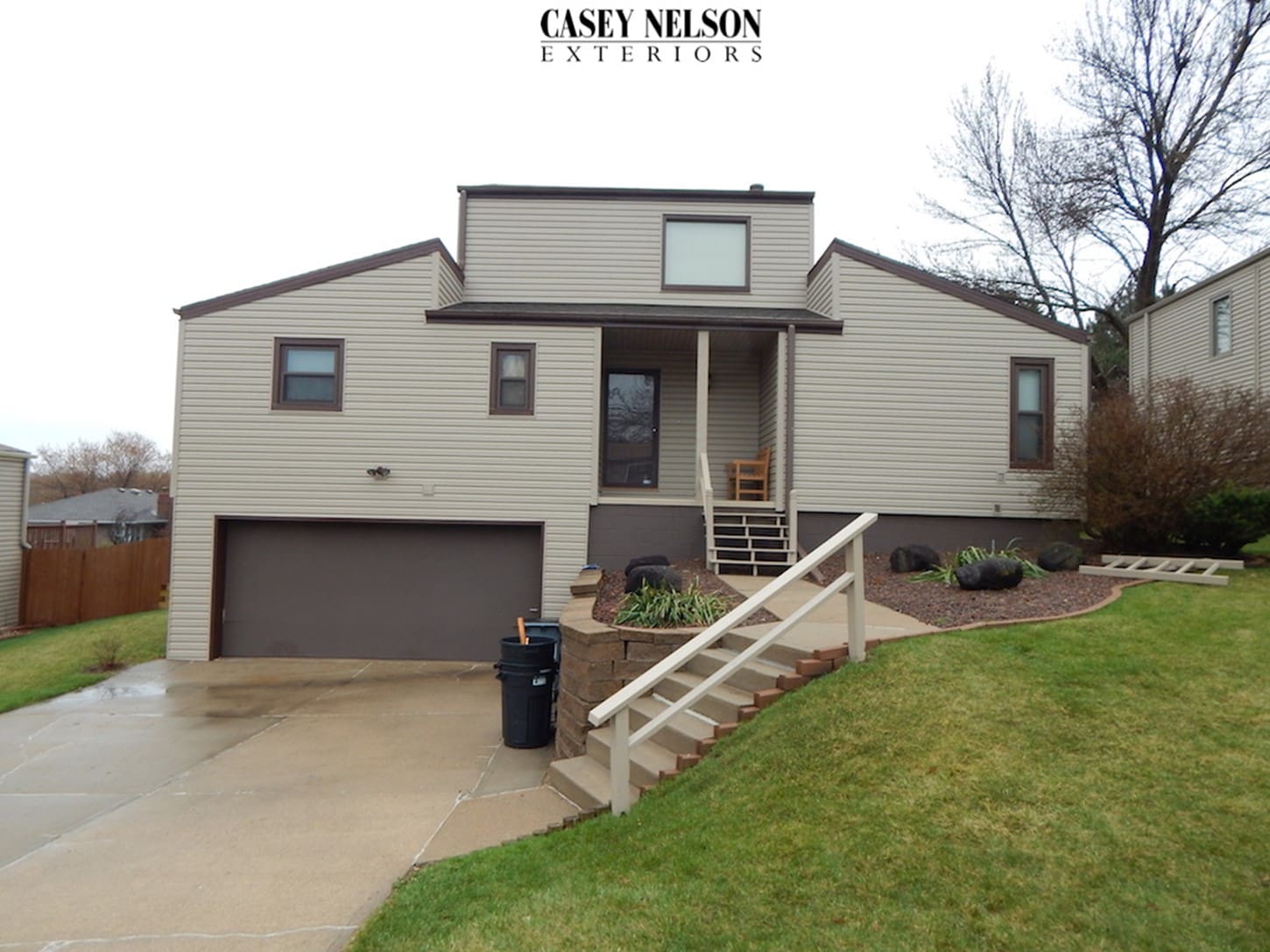
Casey Nelson Exteriors: Mocha Siding by Norandex & Royal Brown wraps and fascia.
4. American Home Styles:
- Colonial: Colonial architecture emerged under colonial rule in the United States in the 1600’s and 1700’s. “Colonial” is typically referred to as shorthand for the historical building style introduced by British colonists in New England. The hallmark design of a Colonial-style home is its symmetry and square or rectangular shape. The main door is typically centered, windows match on each side, and they are at least two to three stories.
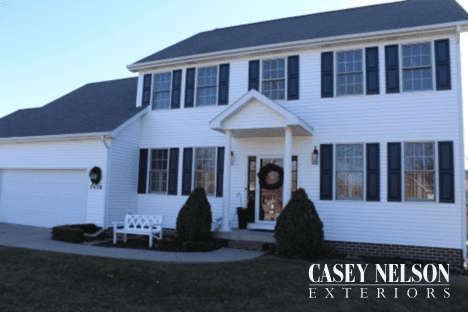
Casey Nelson Exteriors: White Siding by Norandex & Dark Navy Shutters.
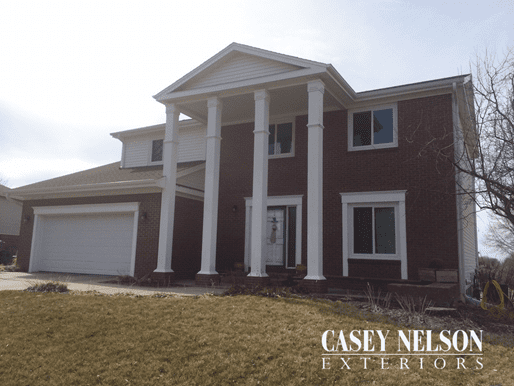
Casey Nelson Exteriors: White Siding by Norandex
- Victorian: The term Victorian architecture refers to a particular era – the reign of Queen Victoria (1837-1901). The architecture is known for its elaborate ornamentation, asymmetrical designs, and use of various architectural details. Features that are key to the Victorian style include steeply pitched roofs, plain or colorfully painted, ornate gables, rooftop finials, bay windows, octagonal or rounded towers, and wrapped porches.
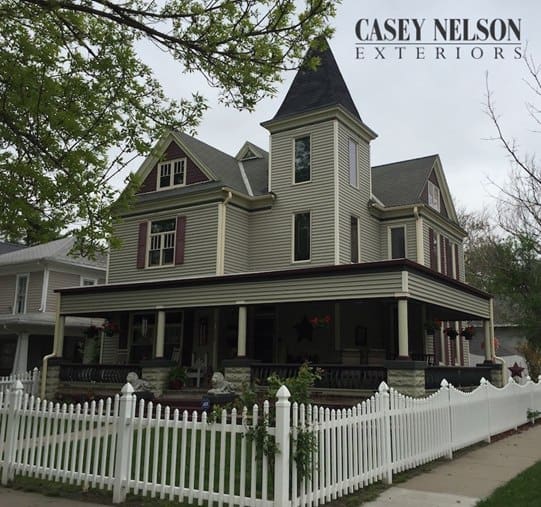
Casey Nelson Exteriors: Cactus Siding by Norandex & Beige corners and wraps.
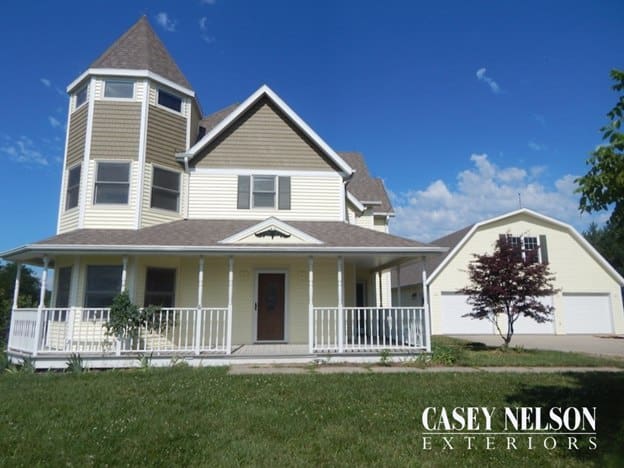
Casey Nelson Exteriors: Cream & Khaki Siding by Norandex
- Craftsman: The Arts and Crafts movement was a reaction to the ornate styles of the Victorian Architecture. This architecture emphasizes handcrafted details, natural materials, and a connection to nature. Many architectural styles came from the Arts and Crafts (1905-1930) movement, including the popular Craftsman and Bungalow-style homes which were designed for working class families. These homes are symmetrical, low to the ground, designed for efficiency and minimal upkeep, feature large fireplaces, low-pitched roofs with wide overhangs, exposed interior beams, built-in bookshelves, window seats and cabinets, multiple windows with small panes, prominent porches, and open floor plans.

Casey Nelson Exteriors: Deep Ocean Hardie Siding & White soffit, fascia and wraps.
- Ranch: Modern architects such as Frank Lloyd Wright redefined the world of architecture with form follows function design. He began to design housed with low horizontal lines and open interior spaces, Wright’s Prairie School designs inspired America’s love affair with the Ranch Style home.
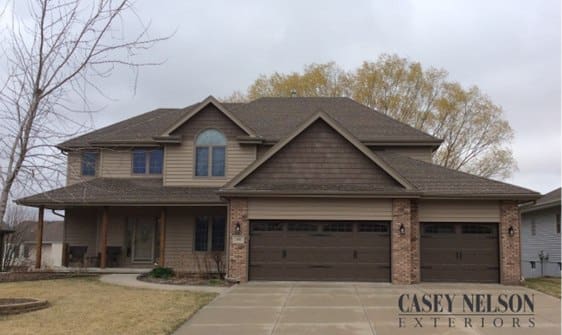
Casey Nelson Exteriors: Weathered Wood Roof by Malarkey

Casey Nelson Exteriors: Firebrick Siding by Norandex & Dark Bronze wraps, fascia, braces & Carbon corners.


